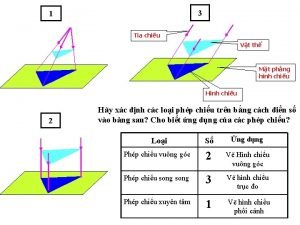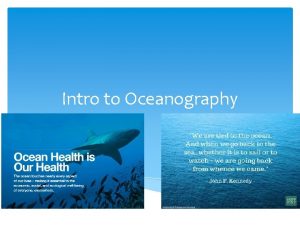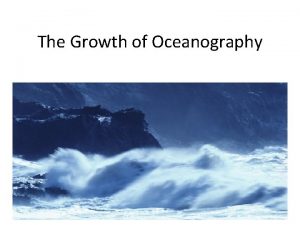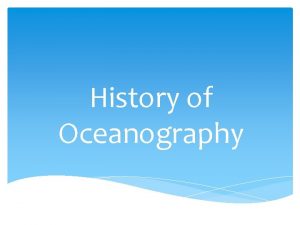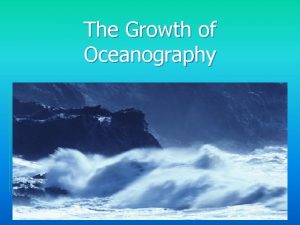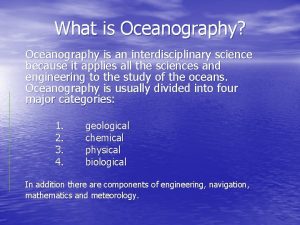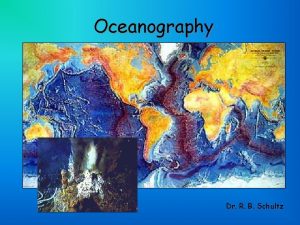Oceanography What is Oceanography Oceanography is the study











- Slides: 11

Oceanography

What is Oceanography? • Oceanography is the study of the Earth’s oceans

The Blue Planet • Oceans contain 97% of water found on Earth. • Oceans cover 71% of the Earth’s surface. • 4 Oceans: Pacific, Atlantic, Indian and Arctic • Average depth of oceans is 3800 meters – but light does not penetrate past 150 meters.

Seawater • About 96. 5% water and 3. 5% dissolved salts (mostly Na. Cl) • Salinity is the measure of the amount of dissolved salts in seawater. • Since salt molecules are heavier than water molecules, saltwater is more dense than freshwater.

Ocean Layers • Temperature gets colder as you go down (deep ocean water is always COLD) • Cold water is more dense than warm water.

Ocean Movements • A wave is a rhythmic movement that carries energy through space or matter (ocean water). • waves are generated by wind. • As a wave passes, the water moves up and down in a circular pattern – only the energy moves forward.

Wave Characteristics

Parts of a Wave • Crest – Highest Point • Trough – Lowest Point • Wave Height – Distance between crest and trough • Wavelength – distance between two crests or two troughs

As waves reach shallow water near shorelines, waves lose energy due to friction along the ocean bottom. • This causes waves to slow down • Incoming wave crests catch up with the slower wave crests ahea • Wavelength decreases – incoming waves become higher, steepe and unstable and the crest falls forward. • Collapsing waves are called breakers.

Tides • Tides are the periodic rise and fall of sea level. o The highest level to which water rises is called high tide and lowest level is low tide • The difference in high and low tide levels vary from place to place (1 m to 15 m) • A daily cycle of high and low tides take 24 hours and 50 minutes.

Types of Tides • Diurnal • Semi Diurnal • Mixed




